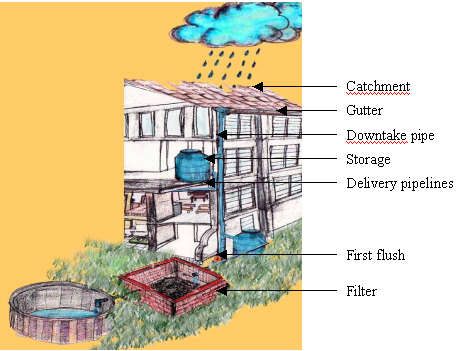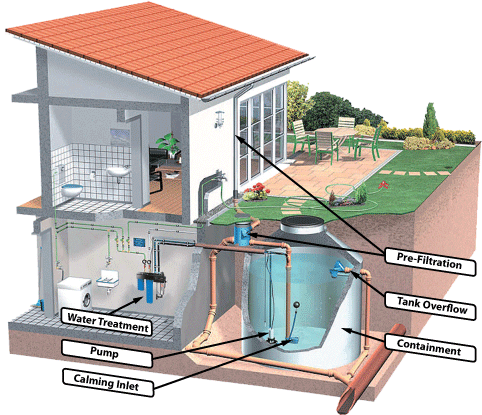
The design concept of Sparkle Water has been known through the study of the main pollutants in the treatment of trash and organic matter, sediments, nutrients and rainwater flow of hydrocarbons and heavy metals.
The separation of large volumes of total contaminants begins at the Point Of Capture dam, dividing most of the total contaminants greater than 5 mm into waste and organic matter sorted by a 0.5 mm screen for the separation of smaller volumes of contaminated load And sediment channels, easy to manage and use.
This provides a flow of improved water quality that is directed to the second channel of the resource for more fine filtration to serve as a common water requirement for non-drinking source water. The first channel is still valuable water, as a highly polluted low volume source, which provides economic filtering in a more intense form of the subject that does not affect the harvest of water resources.
The rainwater can still be used, or can be reused for alternative purposes such as irrigation and release to receive waterways as water quality to improve water. The idea is that no water is wasted but can be used for different purposes, waste is removed as a land-based operation rather than a waterway disposal operation, with significant ecological and river health effects, and urbanization effects from microclimate, Ground water and facilities improved.
The design concept of Sparkle Water has been known through the study of the main pollutants in the treatment of trash and organic matter, sediments, nutrients and rainwater flow of hydrocarbons and heavy metals.
The separation of large volumes of total contaminants begins at the Point Of Capture dam, dividing most of the total contaminants greater than 5 mm into waste and organic matter sorted by a 0.5 mm screen for the separation of smaller volumes of contaminated load And sediment channels, easy to manage and use.
This provides a flow of improved water quality that is directed to the second channel of the resource for more fine filtration to serve as a common water requirement for non-drinking source water. The first channel is still valuable water, as a highly polluted low volume source, which provides economic filtering in a more intense form of the subject that does not affect the harvest of water resources.
The rainwater can still be used, or can be reused for alternative purposes such as irrigation and release to receive waterways as water quality to improve water. The idea is that no water is wasted but can be used for different purposes, waste is removed as a land-based operation rather than a waterway disposal operation, with significant ecological and river health effects, and urbanization effects from microclimate, Ground water and facilities improved.
-
Stormwater
- The Discussion With Greater Sydney Commission About The Greater Sydney Region Plan








 LinkedIn
LinkedIn WeChat
WeChat

